Faculty of Tarbiyah and Teacher Training – The memorization method is still the mainstay of Islamic boarding school education, guys. There, students are required to memorize various kinds of poetry in certain books. These poems address various fields of knowledge, from Arabic, fiqh, ushul fiqih, mantiq, aqidah, to tajwid. At Alma Atta University, we can deepen our knowledge of Islamic Education.
By memorizing this poem, learning becomes smoother and students can more easily understand the concepts of the lesson. So, not only do you memorize without understanding, but you can also explain the concept better. Of course, this method remains an effective choice for education in Islamic boarding schools.
That’s right, guys! Usually, in Islamic boarding schools, students are taught and required to memorize the poetry in certain books. There are at least four books of poetry collections which are learning material for students. This is all to help them understand and master better how to read and recite the holy verses of the Koran. So, you could say this is an important step to understand and maintain the truth in reading the Koran well. Cool!
The following are 4 Tajwid books taught in Islamic boarding schools
Hidayat ash-Shibyan
Wow, really cool! This book contains 40 stanzas of poetry that really focus on recitation lessons. The language is concise and full of abbreviations which make it easier for students to understand the concept of recitation. For example, like “qatbu Jadin” to pronounce the letters qolqolah, which means the letters qaf, tha, ba, jim, and dal. Or “khussha dlaghthin qidh” to pronounce the letters isti’la, which means the letters kha, shad, dlad, ghain, tha, qaf, and dha.
This book was written by Sheikh Sa’id bin Sa’ad Nabhan al-Hadrami, a scholar from Hadramaut, Yemen. As the name suggests, Hidayatus Shibyan, which means instructions for young children, this book is specifically for those who are just learning tajwid. So, the content is very basic and constructive. Incidentally, this book is also usually taught using a Javanese translation written by KH Muthahhar bin Abdurrahman which is entitled Syifaul Jinan, which means antidote for the liver.
Wouldn’t it be great if there was a book like this that would make learning recitation even more fun!
Tuhfatul Athfal
Wow, this is really exciting! This Tajwid book is actually not much different from the previous one, but of course it has its own special features. This book was written by Sheikh Sulaiman al-Jamzuri and contains 61 stanzas of poetry.
This book has a more detailed discussion than Hidayatush Shibyan. Here, we explain in more detail about idgham, starting from idgham mutaqaribain, mutajanisain, mitsli, to kabir. There is also a discussion about the letter lam, not only in nouns in the form of syamsiyah or qamariyah, but also in absolute lam which appears in verbs.
Because there is a deeper discussion, usually the Tuhfatul Athfal book is taught after the students have completed Hidayatush Shibyan. But still, as the name suggests, Tuhfatul Athfal, which means something valuable for small children, this book is still intended for beginner students. It’s really cool, yes, there is a book specifically for learning recitation!
Jazariyah
Wow, this book was written by one of the most famous scholars in the world of the Koran, namely Sheikh Syamsuddin Abul Khair Muhammad bin Muhammad bin Ali bin Yusuf al-Jazari. This book contains 109 stanzas of poetry that highlight the science of recitation.
It is clear that this book is an important reference for students and intermediate level recitation students. The large number of verses shows that this book discusses Tajwid more deeply and comprehensively than the previous book. Here, it is explained in detail about the makhraj, or place where the letters come out. It’s definitely really exciting for those who want to understand Tajweed in more depth, OK?
Matan Syatibiyah
Wow, this book is the work of Imam Abul Qasim bin Fairah al-Syathibi. He named his book Hirzul Amani wa Wajhut Tahani, but it is more famous as ash-Syathibiyah. Here, there are 1173 verses of poetry that discuss the science of reading the Koran in seven types of reading, called Qiraah Sab’ah.
This book is an important reference for students and high-level recitation students. Not only discussing tajwid from one type of reading, but from seven types of Al-Qur’an reading, complete with different letters in all Al-Qur’an verses. The division of chapters is also based on the topics discussed, such as idgham kabir, idgham letters close to makhraj in one and two sentences, ha’ kinayah or ha’ dhamir, hamzah in one sentence, hamzah in two sentences, single hamzah, etc. other.
Not only is its content extensive, this book is also very different in its poetry form compared to other books. If the previous book uses bahr rajaz, this ash-Syathibiyah book uses bahr thawil with the ending “la” in each stanza. It’s really cool, isn’t it, more than a thousand stanzas of poetry with the same ending, make this book extraordinary! Those are the 4 Tajwid books taught in Islamic boarding schools. Guys at Alma ata University.
Source:
- https://www.nu.or.id/pustaka/4-kitab-kumpulan-syair-tentang-ilmu-tajwid-yang-dipelajari-dan-dihafal-santri-6A7X0
- https://www.freepik.com/free-vector/hand-drawn-book-spine-illustration_23969523.htm#query=Ilustrasi%204%20kitab&position=3&from_view=search&track=ais&uuid=57e9d5dd-5314-48aa-ad96-10e7c48939fc








